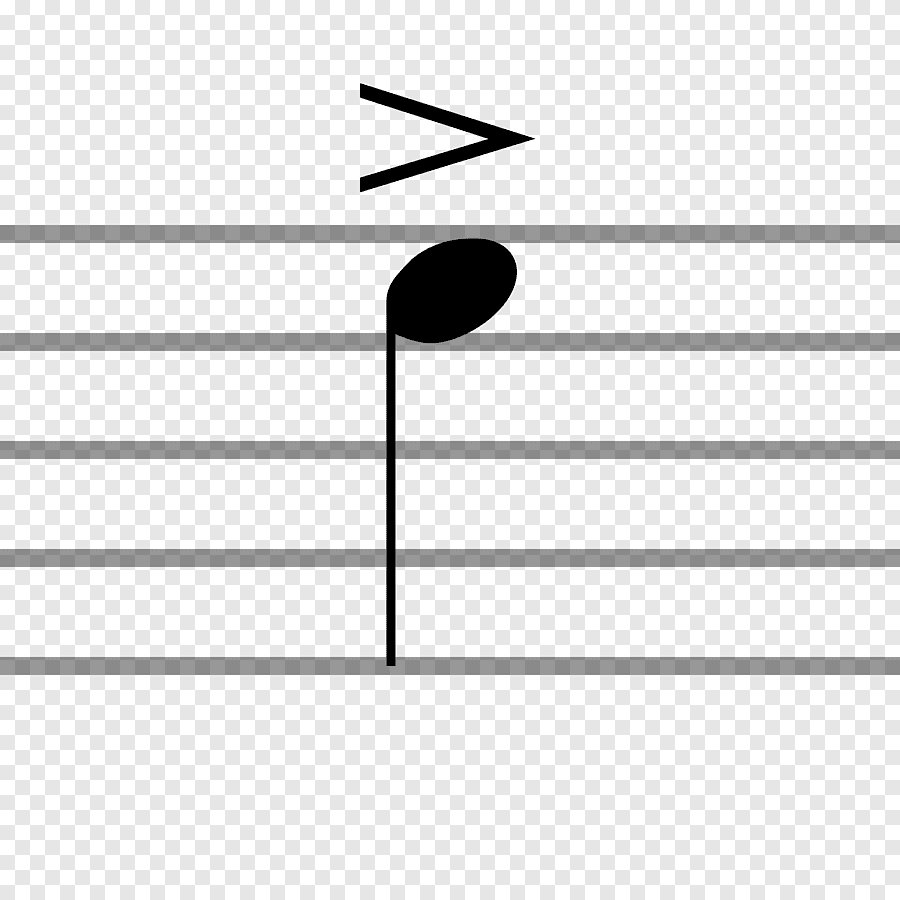Accents in music is one kind of musical notation that indicates the particular style in which a note is to be played. The accent mark is specific to the particular note that is marked above and gives an idea to the musician on how to stress on a particular syllable in the much bigger context of the whole phrase. This can be understood in the context of the English language where different linguistic tools are used to denote some different meaning or emphasis to a word with the use of italics or underlining. English also makes use of asterisks to indicate a particular way of saying a word which further makes a different meaning out of the word than it usually does.
Accents in music and language have another common aspect that will help us understand the true value of accent in a musical composition. We know that musical notes are meant to guide us to how in particular we should play a particular composition or tune. However, there are some peculiarities that may make us sound a bit off.
This can be compared to the phenomenon when a person from another country sounds a bit foreign when they try to speak our language as they simply do not have the same practice as we do to speak the language as fluently. This issue is solved in musical notes with the help of accents as they indicate the precise manner that the note is supposed to sound or to be played. This enables musicians to clearly grasp the notes that they are aiming for and helps them identify any mistake in their flow. There are different categories and types of accents in music each having its particular significance.
Three Categories Of Accents In Music
Although the purpose of accents in music is straight and simple and that is to indicate the importance of emphasis in a particular note, there are more than one ways that these accents are used or executed by musicians. There are a number of ways that musical accents can be used and there are mainly three categories of musical accents present.
- Dynamic Accent
Dynamic accents are the type of accents that concern themselves with one particular note that needs to be stressed while the surrounding notes are not to be meddled with while doing so. Dynamic accents make particular notes stand out more than others in a distinguishable fashion. They are also called stress accents.
- Agogic Accent
The Agogic accent is much like the dynamic accent but the difference between them can be identified when we factor in the duration. Agogic accents do not meddle with the stress on a note but rather emphasize on the duration of a particular note. The notes with an agogic accent require for the particular note to be a tad longer than the surrounding notes.
- Tonic Accent
Tonic accents, like the name suggests, concentrate on the tone of a particular note. When a tonic accent is marked above a particular note, it means that it is supposed to be higher in pitch than the surrounding notes.
Types Of Accents In Music And Their Marks
There are 5 known accent marks in music. All of them have their particular function and utility when it comes to playing music and studying a composition which we will learn about now.
Accent
This mark is shaped like a horizontal wedge and is simply called an accent. This mark is used by composers when they want to associate a need for emphasis with a particular note. These are also the most easily recognizable accent marks among all the types of markings out there.

Staccato
The Staccato note is indicated by a simple dot. The dot is usually placed directly above or below a particular note. The staccato accent is used to indicate a split or break in the tune after briefly playing the note in which the staccato is placed. The note in which the staccato is placed is, therefore, cut significantly shorter than other notes in the composition.


Marcato
The symbol used for Marcato accent is a wedge shape like that in an accent mark but the difference here is that this one is positioned vertically. Marcato is derived from an Italian word that means “hammered”. Marcato can be considered as a hybrid for staccato and an accent. The note with a marcato mark is supposed to be cut short like a staccato and at the same time it should also be as loud as the accent mark usually indicates


Staccatissimo
Staccatissimo is much similar to the staccato. We are sure you can see a similarity in both the words and they are likewise similar in function as well. Like the staccato, staccatissimo also requires the musician to cut the note short. The difference between them comes in the fact that staccatissimo requires cutting the note even shorter than that in a note with a staccato. Staccatismo has gone out of fashion lately and is rarely used by musicians these days. Most of them settle for staccato rather than including a Staccatissimo.


Tenuto
In the simplest of terms, tenuto is the exact opposite of a staccato. While staccato calls for a note to be cut short, tenuto requires you to play the particular note with the tenuto mark to its full extent and move further only after completing the note. This applies for half notes as well with a tenuto on top. Half notes with a tenuto are made to be played to the fullest of that half before moving on to a subsequent note.


These are all the categories and types of accent marks that are used in musical notes. It is imperative for you to know all these marks if you plan to embark on a journey of musical learning. Use this article as a guide to help you identify and understand accents in music so that you know how exactly the notes require you to play the composition at hand.

